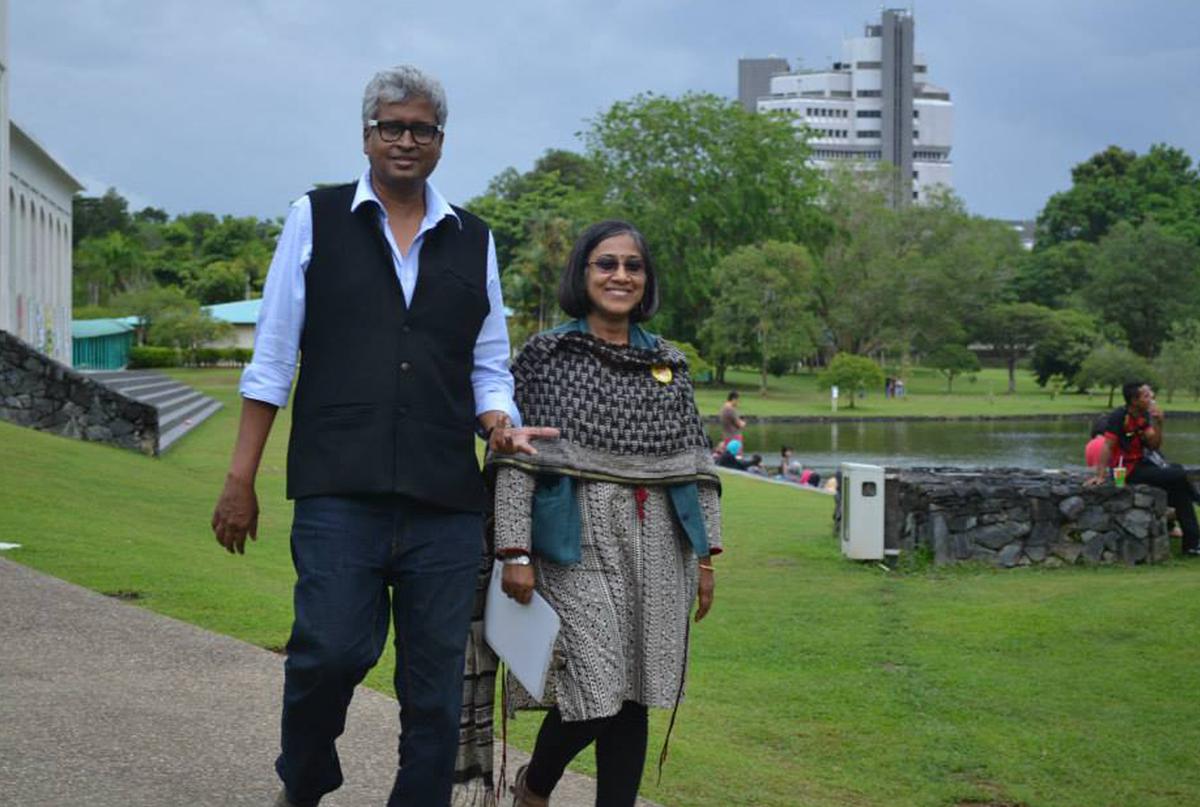A new interactive book from Bookaroo founders, Swati Roy and M Venkatesh, is an effort towards making children think about what matters to them the most about the city they live in
A new interactive book from Bookaroo founders, Swati Roy and M Venkatesh, is an effort towards making children think about what matters to them the most about the city they live in
Some people are lucky to spend a lifetime in their city of birth. Others shift cities by choice or compulsion. While adults worry more about their comfort zones, children view it through their own lens, and seek just their backyards and activity centres.
Swati Roy and M Venkatesh, who established the children’s book store, Eureka in 2003 in Delhi, and five years later created Bookaroo, a festival of children’s literature, started writing The Time Has Come – A story About The Future before the pandemic struck. It took them three years to complete a well-thought out illustrative format, because their aim is to highlight to young readers, between the ages of nine and 12 years, how and why it is important to make any and every city liveable.
Irrespective of where we are born, grow up, study, work and live, the cities we embrace are essentially of two types: the ordinary and the extraordinary ones. And town planners, says Swati, too have parameters to rate a city as child-friendly. Venkatesh explains it as the Popsicle Test. If a child can walk to a neighbourhood store, buy a popsicle and return home before it melts, the city, according to urban planners and architects is child-friendly. The popsicle test is further extended to include: if a child can walk safely to a neighbourhood library and finds a book of his choice, he adds.
Unfortunately, these parameters are woefully absent in our places of stay. “We want our children to speak out, tell us what they want and would want to do because the time has come to change the narrative,” says Swati.
The duo weaves a story about two best friends, Vivek and Neil whose families are distraught when one has to move to another town that neither has heard about! Neil’s family would prefer to shift to a place that cares for everyone and is interesting to live in. In reality, do children and their families really have a choice? asks Swati.
Mission action
This is the point where the story turns into reality. Swati and Venkatesh show in what ways everybody needs to discover the small ways in which they can act to enjoy their city to the maximum. While the book trails the adventures and ideas of the apprehensive residents in a new city, it is Swati and Venkatesh’s idea to engage children into coming up with their own action plans that could and would make their current cities liveable.
“We kept tweaking the liveability context from climate change and pollution to proximity to departmental stores, medical and education facilities,” says Venkatesh. Lot of positive examples were retold in the book.: Khonoma near Kohima in Nagaland, where in 1998 the residents took the initiative to bond with Nature and made it India’s first green village with cobbled streets and regulated vehicular movement is one such. Raahgiri, which was started in Gurugram in 2013, lent its streets to children on Sundays to play, cross, run, bicycle without fear. Over the years, the concept spread in 75 cities across the country under different names.
There are 15-odd open-ended questions that complete the book. “We are trying to trigger thinking among children and hope their suggestions in the coming months will helm a new narrative on what is a liveable city,” says Swati. Within a month of its launch, schools have responded with activities such as creating compost pits and herb gardens.

M Venkatesh and Swati Roy, founders of Bookaroo
| Photo Credit: Special Arrangement
“Children’s mindsets are amazing. To make a city liveable, they want their play grounds intact. They worry about clean toilets and garbage clearance. They wonder why autos cannot drive into airports and why they can’t ride their bicycles with confidence on every road. They seek pothole-free roads, proper footpaths for walking, gardens and libraries and safe plays areas,” says Venkatesh.
Every inhabitant needs to have a stake in his town, is perhaps one of the best sentences Neil’s father tells him after shifting from Jaldigarh to Muskanpur. Children remind us that cities are not just business centres for adults, says Swati, they are also about people’s backyards and walking paths, pedestrianised streets and grocery stores, parks and playgrounds.
A friendly city makes people happy and happy people make the city what it is, says Venkatesh, as he waits with Swati with more answers from their young readers.
























